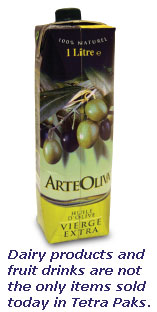Paper's Prospects
- Published: January 31, 2006, By Corey Reardon, AWA Alexander Watson Assoc.
Part 1 | Part 2 | Part 3 | Part 4 | Part 5 | Part 6 | Part 7
Specialty Papers
The packaging industry is by far the largest consumer of specialty papers with 37% of the global market. While many specialty paper markets showed a decline at year-end 2004, there were many more applications with dynamic growth (see chart).
| Specialty Papers in Packaging Applications (2004) | |||
|---|---|---|---|
| Growing | Tons | Static/Declining | Tons |
| Total | 5,460,000 | Total | 319,000 |
| Liquid Packaging | 3,260,000 | Glassine | 100,000 |
| Release | 1,500,000 | Masking Tape | 105,000 |
| Grease Resistant | 400,000 | Vegetable Parchment | 60,000 |
| Greaseproof | 100,000 | Gumming | 30,000 |
| Metallizing | 200,000 | Soap Wrap | 10,000 |
| Anti-corrosion | 8,000 | ||
| Sausage Casing | 5,000 | ||
| Needle Wrap | 1,000 | ||
| ©AWA Alexander Watson Associates | |||
Packaging developments focus on food applications. Key trends include the increase in ready-prepared and take-away foods as well as in fast-food outlets; the increasing use of portion packs and “high-tech” packaging for luxury items; the replacement of cans and glass with cartons and plastic containers; and the popularity of sachet and bag packs for pet foods and sauces.
Underscoring these developments is the current interest in alternative barrier coatings and materials, especially those providing environmental advantages.

Liquid packaging in cartons for milk, juices, and soups is the key area of focus, but it involves very specialized boards. This specialization, and the high volumes required, have meant that the market is controlled by a select number of large paper companies that have been able to make the necessary massive plant investment.In North America, they are International Paper, Potlatch, MeadWestvaco, Weyerhaeuser, and Blue Ridge, many of which also can extrusion-coat for pent-roof “milk” cartons.
But the bulk of extrusion coating for specialized liquid packaging is represented by International Paper (US, France), PKL (Germany, Austria, Russia, Thailand), and Tetra Pak, with some 50 plants worldwide.
Grease-resistant and greaseproof papers also are favored for food packaging. These may be coated (usually C1S) for cookie bags and pet food or uncoated for sandwich and bakery wraps. This area, however, is experiencing major competition from films—especially from vacuum-coated and metallized films in Europe.
Vacuum metallizing of paper has become important for cigarette bundle wraps, specialty bags, and labels on premium products, and while the bulk of metallizing growth is in film, paper continues to advance globally at 7%–8% annually.
Other growth prospects within this market segment include release liners for self-adhesive labels—growing globally at 4%–5%/yr. Nevertheless, there are continuing moves to drive down their cost by using alternative lower-quality papers as the liner base, which can be release-coated using reduced-penetration silicone coating.
Some specialized products for packaging applications have multiple functional features, such as pet food outer liners, which may offer grease resistance as well as gravure printability and even metallizing properties.
Corey Reardon is president/CEO of AWA Alexander Watson Assoc., Amsterdam, Netherlands, a market research firm specializing in packaging and converting. Contact him at +31 (20) 676 20 69.
Market data was compiled from the AWAreness Report, “Specialty Papers: Global Market and Opportunity Sourcebook 2005.”
Part 1 | Part 2 | Part 3 | Part 4 | Part 5 | Part 6 | Part 7





